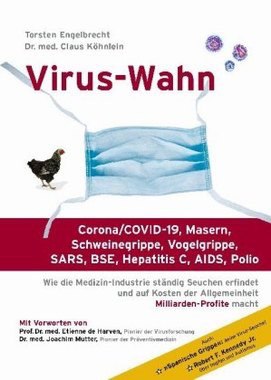Before 2020, we called routine coronavirus infections: a cold, the flu, or pneumonia, according to severity. We hardly ever used any tests to identify the virus.
Before 2020, we called routine coronavirus infections a cold when mild, a strong cold when more symptomatic, and the flu when accompanied by fever. If the flu led to lung infection, we called it either respiratory infection or pneumonia and gave antibiotics, and the infection would be cured in 99.9% of cases, unless the patient was frail, elderly or immunocompromised in which case the recovery rate could fall, but was always in the range of if not higher than ~95% of severe infection cases.
If we were to have routinely tested everyone for spike proteins or other coronavirus target genes, we would have found them in approximately one third of what we call winter colds or flus if not higher.
If we looked at the severity or infection fatality rates of some common coronaviruses in elderly, such as HCoV-OC43 we would have found them equivalent to SARSCoV2.
This is just to say that there is no public health emergency any different than any other year. There are approximately 200 respiratory viruses that can lead to respiratory disease. Many are coronaviruses. The simplest solution is not 200 “vaccines”, but supplementation with vitamin D3.
“Coronaviruses (CoVs) are a common cause of infection in many animal species. In humans, CoVs are most often associated with the common cold, but can cause more serious conditions such as SARS and MERS. These enveloped viruses access their host cells by binding to receptors on the plasma membrane and then undergo fusion with the host membrane. Both binding and fusion are mediated by a specific viral spike protein.“
Coronaviruses—the Common Cold, SARS, MERS—Spike Protein | Cornell Research
https://research.cornell.edu/research/coronaviruses-common-cold-sars-mers-spike-protein
“HCoV-NL63 and HCoV-OC43 infections occur frequently in early childhood, more often than HCoV-HKU1 or HCoV-229E infections. HCoV-OC43 and HCoV-NL63 may elicit immunity that protects from subsequent HCoV-HKU1 and HCoV-229E infection, respectively, which would explain why HCoV-OC43 and HCoV-NL63 are the most frequently infecting HCoVs.”
https://pubmed.ncbi.nlm.nih.gov/22188723/
“HCoV-NL63 is the aetiological agent for up to 10% of all respiratory diseases.”
https://www.ncbi.nlm.nih.gov/pmc/articles/PMC2918871/
“Among HCoV positive cases, 47% (n=147) were coinfected with other respiratory virus pathogens.”
https://wellcomeopenresearch.org/articles/5-150
“We have characterized an outbreak of respiratory illness due to HCoV-OC43. The observed attack rate of 67% and case fatality rate of 8% underscore the pathogenic potential of HCoVs in frail populations. This adds to other observations underscoring that CoVs other than SARS-CoV may be responsible for a broader spectrum of disease”
https://www.ncbi.nlm.nih.gov/pmc/articles/PMC2095096/
Coronaviruses—the Common Cold, SARS, MERS—Spike ProteinBefore 2020, we called routine coronavirus infections a cold when mild, a strong cold when more symptomatic, and the flu when accompanied by fever. If the flu led to lung infection, we called it either respiratory infection or pneumonia and gave antibiotics, and the infection would be cured in 99.9% of cases, unless the patient was frail, elderly or immunocompromised in which case the recovery rate could fall, but was always in the range of if not higher than ~95% of severe infection cases.
If we were to have routinely tested everyone for spike proteins or other coronavirus target genes, we would have found them in approximately one third of what we call winter colds or flus if not higher.
If we looked at the severity or infection fatality rates of some common coronaviruses in elderly, such as HCoV-OC43 we would have found them equivalent to SARSCoV2.
This is just to say that there is no public health emergency any different than any other year. There are approximately 200 respiratory viruses that can lead to respiratory disease. Many are coronaviruses. The simplest solution is not 200 “vaccines”, but supplementation with vitamin D3.
“Coronaviruses (CoVs) are a common cause of infection in many animal species. In humans, CoVs are most often associated with the common cold, but can cause more serious conditions such as SARS and MERS. These enveloped viruses access their host cells by binding to receptors on the plasma membrane and then undergo fusion with the host membrane. Both binding and fusion are mediated by a specific viral spike protein.“
Coronaviruses—the Common Cold, SARS, MERS—Spike Protein | Cornell Research
https://research.cornell.edu/research/coronaviruses-common-cold-sars-mers-spike-protein
“HCoV-NL63 and HCoV-OC43 infections occur frequently in early childhood, more often than HCoV-HKU1 or HCoV-229E infections. HCoV-OC43 and HCoV-NL63 may elicit immunity that protects from subsequent HCoV-HKU1 and HCoV-229E infection, respectively, which would explain why HCoV-OC43 and HCoV-NL63 are the most frequently infecting HCoVs.”
https://pubmed.ncbi.nlm.nih.gov/22188723/
“HCoV-NL63 is the aetiological agent for up to 10% of all respiratory diseases.”
https://www.ncbi.nlm.nih.gov/pmc/articles/PMC2918871/
“Among HCoV positive cases, 47% (n=147) were coinfected with other respiratory virus pathogens.”
https://wellcomeopenresearch.org/articles/5-150
“We have characterized an outbreak of respiratory illness due to HCoV-OC43. The observed attack rate of 67% and case fatality rate of 8% underscore the pathogenic potential of HCoVs in frail populations. This adds to other observations underscoring that CoVs other than SARS-CoV may be responsible for a broader spectrum of disease”
https://www.ncbi.nlm.nih.gov/pmc/articles/PMC2095096/
Coronaviruses (CoVs) are a common cause of infection in many animal species.



